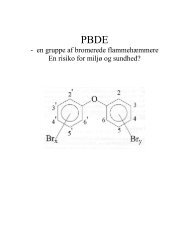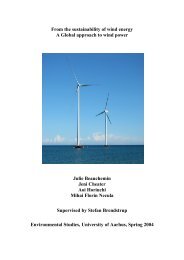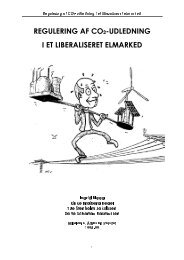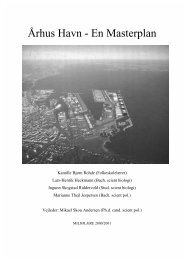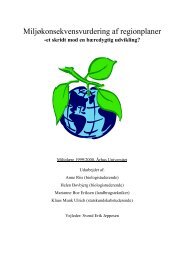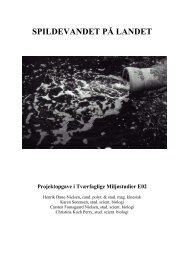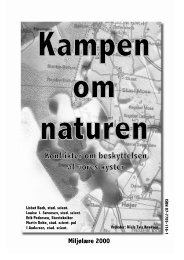University of Aarhus ECOTOURISM AS A WAY TO PROTECT ...
University of Aarhus ECOTOURISM AS A WAY TO PROTECT ...
University of Aarhus ECOTOURISM AS A WAY TO PROTECT ...
You also want an ePaper? Increase the reach of your titles
YUMPU automatically turns print PDFs into web optimized ePapers that Google loves.
Ecotourism as a sustainable way to protect nature<br />
fishermen and floating hotels (most not owned by Galapagueños) are virtually<br />
non-existent, most food and other suppliers are imported (Honey, 1999).<br />
b. Legislation/Regulation<br />
Gradually steps were taken towards conservation. In 1935 the Ecuadorian<br />
government passed legislation to protect the islands wildlife. But the legislation<br />
was not enforced; it was not until 1959 that the Ecuadorian government declared<br />
97% <strong>of</strong> the islands a national park. The remaining 3% <strong>of</strong> settlement were already<br />
established (Honey, 1999).<br />
In 1986 the Ecuadorian government declared 50.000 square kilometres <strong>of</strong><br />
water reserved. Under a new special Galapagos law enacted in 1998, the<br />
reserved area has been enlarged to over 130.000 square kilometres in size. It is<br />
now the second largest marine reserve in the world, after the Great Barrier Reef<br />
in Australia.<br />
To visit the National park you have to be accompanied by a licensed<br />
guide. Naturalist guides are licensed by the National park, after required training<br />
courses given by the park and Charles Darwin Research Station, and finally<br />
passing an examination. The park’s regulations require a maximum <strong>of</strong> 16<br />
visitors per guide in a single group.<br />
One way to collect money for protection and conservation is through park<br />
entrance fees. In the early 1990s park entrance fees, paid at the airport, covered<br />
the entire stay at the islands. The tax were 40$ for foreigners and 0.16$ for<br />
nationals. Only 10-20% <strong>of</strong> the revenues went to support the national park<br />
(Honey, 1999). Through the 1990s the entrance fees raise from 40$ to 100$, and<br />
in 1994 the government set aside 40% for protection <strong>of</strong> the National park. In the<br />
mid-1990s tourism was the fourth largest foreign currency earner in Ecuador,<br />
after petroleum, bananas and shrimps (Honey, 1999).<br />
48




